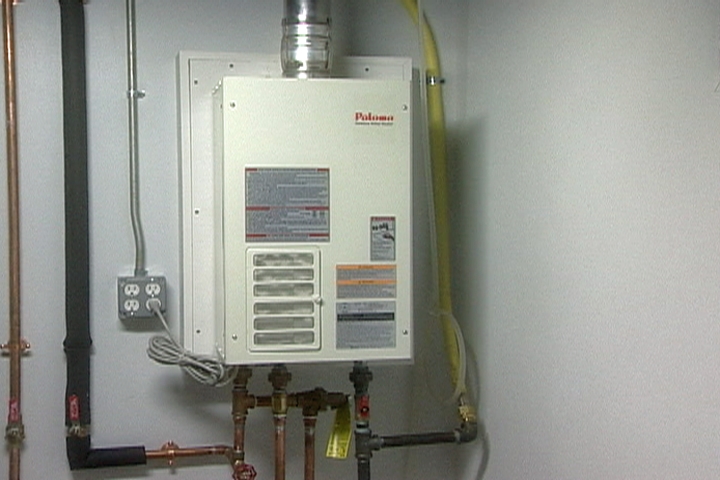How to Keep Your Home's Hot Water System in Good ConditionWhat to Maintain Your Home's Hot Water System Properly
How to Keep Your Home's Hot Water System in Good ConditionWhat to Maintain Your Home's Hot Water System Properly
Blog Article
Were you in search of facts concerning Water Heater Maintenance Tips You Can't Afford to Forget?
:max_bytes(150000):strip_icc()/reasons-gas-water-heater-not-working-5212987-hero-fe6b82a59053421c88b7d13ea311d3c5.jpg)
Hot water is important for day-to-day comfort, whether it's for a rejuvenating shower or washing dishes. To ensure your warm water system runs efficiently and lasts longer, routine upkeep is key. This post offers functional ideas and understandings on just how to maintain your home's warm water system to stay clear of disruptions and costly repair services.
Intro
Keeping your home's hot water system may appear overwhelming, yet with a couple of basic actions, you can ensure it operates smoothly for many years ahead. This guide covers whatever from recognizing your warm water system to DIY maintenance pointers and knowing when to contact specialist aid.
Importance of Maintaining Your Hot Water System
Routine upkeep not only prolongs the lifespan of your hot water system however likewise guarantees it runs efficiently. Overlooking upkeep can bring about decreased efficiency, higher power costs, and also premature failure of the system.
Indications Your Warm Water System Demands Upkeep
Understanding when your warm water system requires focus can protect against major issues. Look out for indications such as irregular water temperature level, weird sounds from the heater, or rustic water.
Purging the Water Heater
Purging your hot water heater removes debris accumulation, boosting efficiency and prolonging its life.
Checking and Changing Anode Rods
Anode poles prevent corrosion inside the storage tank. Evaluating and changing them when worn out is important.
Facility Concerns Requiring Professional Help
Examples consist of major leaks, electrical issues, or if your hot water heater is continually underperforming.
Routine Professional Maintenance Advantages
Expert upkeep can consist of detailed inspections, tune-ups, and guaranteeing compliance with security requirements.
Evaluating and Readjusting Temperature Level Settings
Adjusting the temperature settings ensures optimal performance and safety.
DIY Tips for Maintenance
You can perform several maintenance tasks on your own to keep your hot water system in top problem.
Looking for Leakages
Regularly inspect pipelines and links for leaks, as these can lead to water damages and greater costs.
Recognizing Your Hot Water System
Before diving into maintenance jobs, it's practical to comprehend the basic elements of your hot water system. Generally, this consists of the hot water heater itself, pipes, anode rods, and temperature level controls.
Monthly Upkeep Tasks
Routine monthly checks can help capture small problems before they escalate.
Testing Stress Relief Valves
Checking the pressure relief valve guarantees it operates properly and avoids excessive stress accumulation.
Protecting Pipes
Shielding warm water pipes reduces warmth loss and can conserve energy.
When to Call a Professional
While do it yourself maintenance is useful, some concerns need professional proficiency.
Final thought
Routine maintenance of your home's warm water system is vital for efficiency, long life, and expense savings. By adhering to these suggestions and knowing when to look for professional aid, you can make sure a dependable supply of hot water without unforeseen disruptions.
How to Maintain an Instant Hot Water Heater
Before tinkering with your hot water heater, make sure that it’s not powered on. You also have to turn off the main circuit breaker and shut off the main gas line to prevent accidents. Also turn off the water valves connected to your unit to prevent water from flowing into and out of the appliance. 2. When you’re done, you have to detach the purge valves’ caps. These look like the letter “T” and are situated on either side of the water valves. Doing so will release any pressure that has accumulated inside the valves while at the same time avoid hot water from shooting out and burning your skin. 3. When the purge valves’ caps are removed, you have to connect your hosing lines to the valves. Your unit should have come with three hoses but if it didn’t, you can purchase these things from any hardware or home repair shops. You can also get them from retail stores that sell water heating systems. Read the user’s manual and follow it to complete this task properly. When the hosing lines are connected, open the purge port’s valves. 4. You should never use harsh chemical cleaners or solutions when cleaning your unit. Make use of white vinegar instead. It should be undiluted and you’ll probably use about 2 gallons. 5. Now flush your water heater. This task should probably take about 40 minutes. We can’t give you specific directions for this because the procedure is carried out depending on the type, model and brand of your heater. With that being said, refer to the user’s manual. 6. When you’re done draining the unit, you have to turn off the purge port valves again. Remove the hosing lines that you earlier installed on each of the water valves. Put the valve caps (purge port) back in their respective places and be very careful so as not to damage the rubber discs that are found inside these caps. 7. Now that everything’s back in place, check your user’s manual again to find out how to reactivate your water heating system. 8. Once it is working, turn one of your hot water faucets on just to let air pass through the heater’s water supply pipes. Leave the tap on until water flows smoothly out of it. https://www.orrplumbing.com/blog/2014/september/how-to-maintain-an-instant-hot-water-heater/

I'm just very intrigued by How to Maintain a Hot Water Heater in a Few Simple Steps and I'm hoping you enjoyed my piece. Those who appreciated our blog post please be sure to pass it around. Thank you for taking the time to read it.
Call Today Report this page